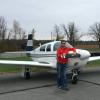-
Posts
142 -
Joined
-
Last visited

blaine beaven replied to blaine beaven's topic in Modern Mooney Discussion

blaine beaven replied to PT20J's topic in Avionics/Panel Discussion

blaine beaven replied to gtprend's topic in Modern Mooney Discussion

blaine beaven replied to MisfitSELF's topic in General Mooney Talk

blaine beaven replied to blaine beaven's topic in Modern Mooney Discussion

blaine beaven replied to blaine beaven's topic in Modern Mooney Discussion

blaine beaven replied to Pinecone's topic in Avionics/Panel Discussion

blaine beaven replied to William Munney's topic in Modern Mooney Discussion

blaine beaven replied to William Munney's topic in Modern Mooney Discussion
We have placed cookies on your device to help make this website better. You can adjust your cookie settings, otherwise we'll assume you're okay to continue.